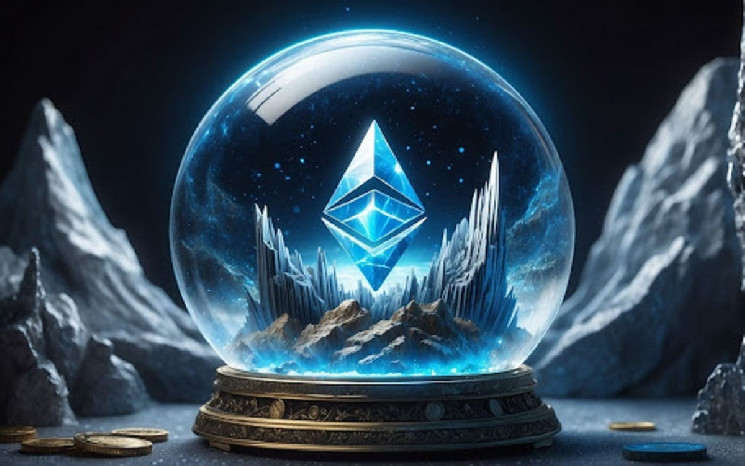In the traditional financial system, dividends are regular payments that companies make to their shareholders. The amount of these payments depends on the company’s profit and is approved by the Board of Directors.
In the context of cryptocurrencies, dividends are rewards that are paid by cryptocurrency companies from their revenues, commissions or profits.
It is important to note the difference between cryptocurrency dividends and staking rewards or airdrops. Cryptocurrency dividends, although they may resemble staking rewards, are dependent on the income of the project, usually a centralized service. Perhaps such payments are provided even on the exchange where you plan to buy USDT erc20. In the case of staking, for example, rewards are paid to blocking validators serving the network.
This needs to be taken into account, since few of the projects listed use the term “dividends” to refer to their payments.
LooksRare
LooksRare is a decentralized marketplace for non-fungible tokens (NFTs) that aims to reward traders and collectors by generating massive rewards. Launched in early 2022, the NFT platform promises its users an impressive reward of over $1 billion.
LooksRare’s main goal is to surpass OpenSea, the current leader among NFT markets in terms of trading volume. What sets LooksRare apart is that it charges just 0.5% commission on NFT sales, compared to OpenSea’s 2.5% commission. Moreover, the platform does not charge any fees during the promotional month ending December 16, 2023.
The LooksRare token, known as LOOKS, has a maximum supply of 1 billion, half of which is currently in circulation. Unlike centralized marketplaces, LooksRare distributes all commissions from NFT sales in the form of LOOKS tokens, providing its holders with dividend-like rewards. Trading fees and rewards are paid in WETH (Wrapped Ethereum) and LOOKS holders are entitled to daily reward payouts.
VeChain
VeChain acts as a smart contract platform similar to NEO and Ethereum, providing a highly scalable, green layer 1 blockchain infrastructure.
One of the outstanding benefits of VeChain is the ability to receive “dividends” in the form of VTHO coins. In order to earn VTHO tokens, users must store VET tokens in their wallets. 0.00043 VTHO tokens are paid out daily for every 1 VET staked. Annual dividends range from 1% to 3% and are paid monthly.
NEO
NEO, formerly known as AntShares, has established itself as a popular smart contract-enabled blockchain and has been nicknamed the “Ethereum of China.” During the ICO period, it caused a wide resonance, but today it is losing ground to its rivals, including Avalanche, Solana, Polkadot and Polygon.
The NEO ecosystem is supported by the NEO token, whose owners have the ability to lock coins to receive dividends in the form of GAS tokens. Unlike the Ethereum network, GAS in NEO is a secondary token designed for governance, smart contracts and dividend rewards.
NEO has an annual percentage return of over 3%, and NEO token holders typically receive 0.0004 GAS daily for each token they own. Despite its excellent decentralized infrastructure, NEO faces increasing competition from more modern projects.
PIVX
PIVX (Private Instant Verified Transactions) is a privacy-focused digital currency launched in 2016 as a hard fork of the Dash code. Its goal was to provide users with anonymous financial transactions using the “sub-currency” zPIV.
The project was created with an emphasis on confidentiality and instant confirmation of transactions. By using Zerocoin technology, PIVX provides a high level of anonymity and security when making transactions. Based on Zerocoin’s Proof of Stake protocol, PIVX allows users to use their coins to secure the network. PIVX holders holding them in a supported wallet receive new PIVX coins at up to 13% interest per annum.
KCS
KuCoin Shares (KCS) is the native token of the KuCoin crypto exchange, which is technically ERC-20. Holders of KCS by storing them in their wallet on the KuCoin exchange can receive rewards daily as part of the KCS rewards program. The actual amount depends on the users’ assets, the total volume held by all registered users and the daily trading volume on the platform.
On average, holding KCS can earn an annualized return (APY) of up to 2%. Daily dividends are paid from 50% of the exchange’s daily income received from trading commissions. To participate in the reward program, you must store at least 6 KCS. In addition to dividends, KCS staking with fluctuating APY is also available on the platform. The lowest rate since the launch was 6.9%, and you can join staking even if you have 1 coin.
Is it worth investing in cryptocurrencies that pay dividends?
First of all, there are very few cryptocurrencies that pay dividends. It is important to remember that ultimately the profitability depends on the price of the underlying token. If the token price drops by 20% and you receive a 10% dividend, that still means a 10% loss. On the other hand, an increase in the price of the underlying asset can increase your portfolio in dollar terms.
When forming an investment portfolio, it is more reasonable to invest in high-quality projects first, and the presence of dividends is better considered as a pleasant bonus. The investment decision must take into account a wide range of factors, such as the project’s prospects, its technology, its development team, and the overall state of the cryptocurrency market.
